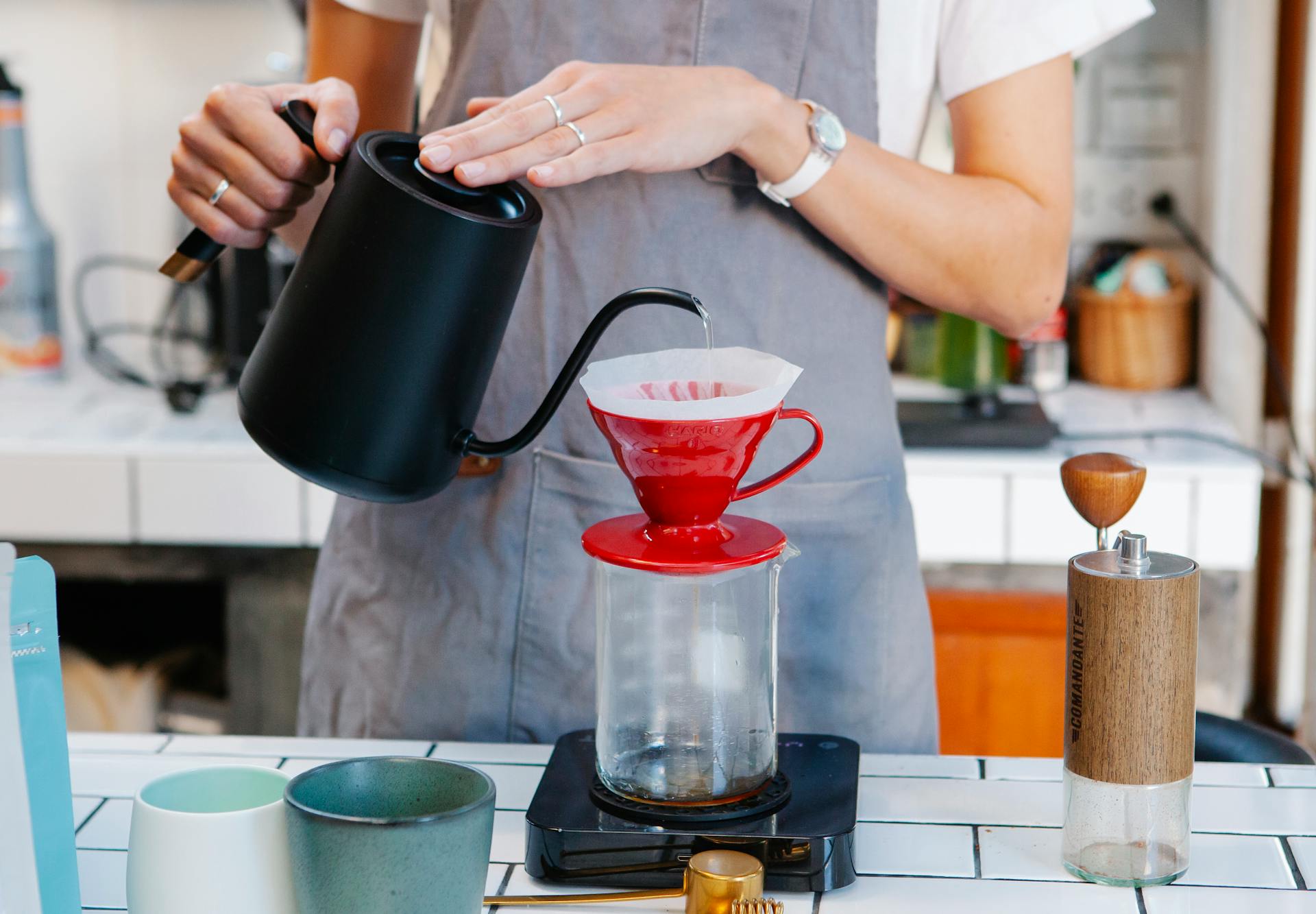Making better coffee at home is easier than you think. Whether you’re eyeing a morning black coffee or a shot of espresso, with a few simple tips and tricks, you can enhance your home brew.
Coffee is more than just a beverage. It’s like an old friend: reliable, comforting, and always having your back. It’s not just a coffee; it’s a craft, an art. From where that little cup hits you, it’s not just a wake-up call; it’s a flavor feast that’s supposed to be savored. Give me a steaming hot cup of coffee and a good book on a lazy Friday. I’m satisfied.
Nothing can be easier than making coffee. Just grind some beans and put them in your preferred coffee pot(which you have to do anyway). Boil some water, pour it over, wait, strain, and enjoy; it can’t be any easier. Many coffee enthusiasts still appreciate a good cup of coffee. However, it ultimately comes down to personal preferences and findings that align with your taste, convenience, and preferences. So grab your favorite coffee and walk with us in this detailed guide to make an extraordinary brew next time.
1. Use Freshly Roasted Whole Coffee Bean
The best coffee bean for your preferred method depends on how you plan to use it. A typical espresso blend can work if you plan to add milk to the finished product. However, something roasted lighter is usually better for serving straight up. In terms of coffee, the heavy body and fruity flavor of natural or honey-processed coffee tend to do well with coffee. Even the deep fruity sweetness of an Ethiopian natural or heavy chocolate flavors of a Brazil pulped natural coffee are right on the money for you.
You can use any coffee you like. However, I recommend using sweet and fruity coffees. Naturally processed coffee possesses some experimental quality that elevates fruitiness and sweetness and creates a bold cup of coffee. The variety of coffee you use depends on how you plan to use it. Although an espresso blend can make a good concentrated coffee treat, I recommend a filter-roasted coffee if you serve it black. Now, good coffee comes from good beans. Use your favorite, or ideally, a locally sourced, freshly roasted coffee.
2. Understanding Grind Size
Getting the correct grind size and understanding it is important to ensure you have a great cup of joe. The amount of coffee being extracted depends upon a few things. The finer the coffee, the more extraction will occur; the finer the coffee, the greater the surface. When you grind the coffee, there will be enough contact with the water. Finer coffee slows down the flow by increasing the extraction rate level from the coffee. It’s one of the most important things to consider when brewing coffee. Coarse coffee is the inverse; it’s going to decrease your surface area, therefore, your extraction will be less.
If you grind your coffee beans too coarse and you brew with a pretty coarse grind, then you will find your coffee kind of tasting bland, or you can kind of taste a little weak. On the other hand, if you grind it too fine, it can taste a little bitter.
3. Use A Burr Grinder
The quality of your grinder will play a key role in the quality of your grind and the consistency of the grind. Burr grinders, I’m just going to say, are, for the most part, superior. However, there are a lot of people who say their blade grinder works just fine. However, for those coffee lovers who want to travel down the road to specialty coffee and get into tasting notes and get into tasting different flavors and pulling out what they actually can from the coffee, then I think you need to invest in a quality burr grinder.
Burr grinders are a little bit bigger and a little bit fancier, and they have three parts, a hopper where you put the beans, the grinding chamber, and the removable chamber that captures the ground for you. You just have to switch it on, and it will work. There are two metal-like rings called burrs that spin against one another to crush the beans. Nowadays, people are obsessed with burr grinders because the machine works hands-off with specific settings so they can guarantee consistency.
4. Using Filtered Water
The quality of your water will greatly impact the flavor of your coffee. It also depends on the quality of your tap water. If you can brew a fantastic coffee with your tap water, then it’s fine; otherwise, your coffee experience will be a disaster at home. If you use hard water with lots of minerals in it or maybe a lot of chlorine, trust me, there can be nothing as bad as this. So, use filtered water to brew excellent coffee every time you brew at home.
5. Water Temperature
The next most common mistake while brewing is using boiling water. Make sure the water is hot, not boiling. Let the boiled water cool down before pouring it over coffee grounds. This step will avoid a potentially unwanted acidic taste and preserve the smooth, rich taste of the brewed coffee.
Water temperature is crucial in terms of brewing coffee. If it is too hot, you’ll overexert your water with a bitter brew. On the other hand, if your water is too cold, it won’t extract enough flavor. Aim for a water temperature between 195℃ and 200℃. An easy trick for medium to light roast is to boil your water and let it sit for 30s before pouring.
6. Brew Ratio
If you know how much coffee you want to brew, you can calculate the water you need. The recommended ratio for black coffee is 1:15, which means that for every 1 gram of coffee, you’ll use 15 grams of water.
Since there are different brewing ratios for different brewing methods, it’s important to know that you can tweak these just like any other variable in your recipe. You can find the perfect ratio just by tweaking the two variables. A lower ratio means less water used and less extraction, which will result in a more concentrated flavor. If you’re using a higher ratio, you’ll be using more water, which means more extraction and less concentration.
7. Properly Blooming Your Coffee
Some coffee enthusiasts like to bloom their coffee to release carbon dioxide before topping it off with water. This step is crucial in the brewing process since it ensures a well-extracted brew every time.
Add a little bit of water to saturate your coffee ground, as these steps will increase the extraction time. For many, the 30s is the sweet spot for blooming coffee beans. Set a timer and let your coffee bloom. Then, fully submerge your coffee in the desired amount of water and enjoy a balanced cup of coffee.
8. Storing Coffee Bean
Most often, coffee is packaged in the airtight, plastic, or paper packages we see in the store. A package with a little valve on the side allows carbon dioxide to escape while keeping the coffee beans fresh. However, these packages aren’t designed for long-term storage, so once you get your precious packs of coffee beans, make sure you transfer them to a suitable container. It should be airtight, dark-colored, and kept in a cool, dry place.
Once in the correct container, your beans should stay fresh for 2-3 months if stored in a cool, dry place, especially in a pantry. But ideally, you want to use the beans within a month of being roasted to enjoy them at their best.

